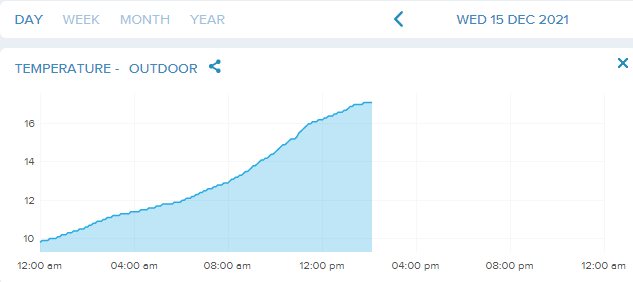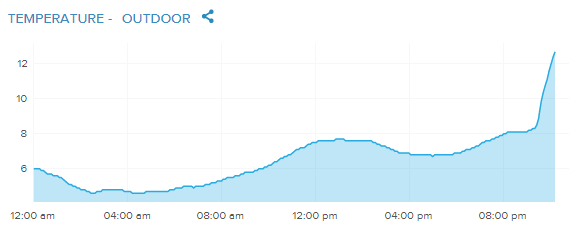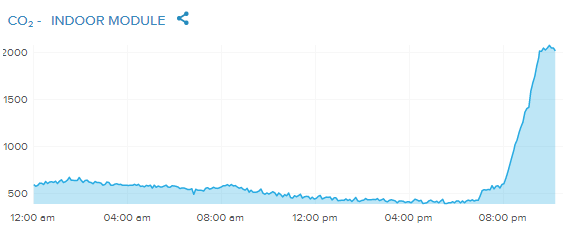Via The Washington Post, Climate Central reports that winters have gotten significantly warmer in the US, especially in the Great Lakes and Northeast regions:
.jpg)
[W]inter in the United States is warming faster than any other season. Since 1970, average winter temperatures have increased [0.6°C] or more in every state, while 70 percent have seen increases of at least [1.7°C].
Other studies have shown the length of winter season shrinking globally as well. From 1952 to 2011, winter shrank by at least 2.1 days per decade on average. By 2100, winter could be less than two months and could start a half-month later.
Changes in the blooms of fruits and plants can affect other links in the food chain. For instance, many migratory birds travel north according to the movement of the sun. If plants bloom earlier or insects move because higher temperatures occur earlier, the birds may arrive when most of their food is no longer abundant.
Across the eastern United States, Climate Central found that cold weather still will occur in the coming decades, although cold snaps have become shorter and less frequent recently.
In Chicago, we've seen a full 2°C rise in temperatures in my lifetime:
.jpg)
In case the raw statistics don't get you to notice climate change, Climate Central also has an interactive map where you can raise sea level a bit and watch your favorite cities disappear. At 1.5 meters, for example, my old place in Hoboken, N.J., pokes out of a shallow lagoon. At 5 meters, we no longer care about Florida.
If, as expected, Chicago gets no measurable snow by 6pm tonight, we will set a new record for the latest measurable snowfall of the cold season (July 1st to June 30th, believe it or not), and the second-longest stretch without snow in recorded history:
On Monday...Chicago tied the record, which dates back to Dec. 20, 2012.
There is no snow in the forecast until possibly well beyond Christmas.
There has been some snow so far this season. But instead of having the first typical snowfall earlier in the fall, there have only been traces.
To be measurable, there must be at least [2.5 mm]. Since November, there have been such amounts in the area, but not at O’Hare International Airport, which is the official weather recording station for Chicago.
We last had measurable snowfall on March 15th, 280 days ago. The longest period—which the 10-day forecast suggests we might tie or break—ran from 4 March to 19 December 2012, comprising 290 days.
That said, through December 21st last year we only had 18 mm of snowfall at O'Hare, before getting over a meter of snow through the end of February.
Personally, though, I'm happy with our mild and snow-free December.
Glorious Solstice to All, too.
The Washington Post breezes in with a month-by-month interactive feature:
[E]vidence increasingly shows that historic heat waves, monster rain events and ultra-intense storms are exacerbated by the warmer air and water of our overheating planet.
“The only two truisms when it comes to extremes in climate change are that almost everywhere: The hot hots are getting hotter and more frequent, and the wet wets are getting wetter and more frequent,” said Daniel Swain, a climate scientist at UCLA who specializes in the relationship between climate change and weather.
The year began with what Swain might call a “wetter wet” against the backdrop of a year-long drought, and it just got weirder from there.
Enjoy, and here's to more climate-change craziness in 2022!
I will now take a break from my ongoing struggles to make Blazorise play nicely with Open ID authentication so I can read these:
And finally, WGN confirms we hit back-to-back record temperatures Wednesday and Thursday, both tied for 11th warmest December day in Chicago history.
I just started Sprint 52 in my day job, after working right up to the last possible minute yesterday to (unsuccessfully) finish one more story before ending Sprint 51. Then I went to a 3-hour movie that you absolutely must see.
Consequently a few things have backed up over at Inner Drive Technology World Headquarters.
Before I get into that, take a look at this:

That 17.1°C reading at IDTWHQ comes in a shade lower than the official reading at O'Hare of 17.8°, which ties the record high maximum set in 1971. The forecast says it'll hang out here for a few hours before gale-force winds drive the temperature down to more seasonal levels overnight. I've even opened a few windows.
So what else is new?
So what really is new?
But Sprint 52 at my office, that's incredibly new, and I must go back to it.
My outdoor thermometer has alerted me to an unusual temperature swing:

Yes, that's a 4°C rise in one hour. At least it's stopped raining. But there is a tornado warning about 100 km from here, so there's a lot of energy in the air right now.
Meanwhile, indoors, my fireplace caused a spike in CO2:

Don't worry, 2,000 ppm won't hurt me. But I did get an alert about it.
We're all set to perform Handel's Messiah tomorrow and Sunday, which got noticed by both the local news service and local TV station. Otherwise, the week just keeps getting odder:
And to cap all that off, the National Weather Service has announced a Hazardous Weather Outlook for tonight that includes...tornados? I hope the weather gets better before our performance.
Just a couple of eye-roll-worthy lunchtime links today:
What fun.
As the last workday in October draws to a close, in all its rainy gloominess, I have once again spent all day working on actually coding stuff and not reading these articles:
Finally, a 97-year-old billionaire has given $240 million to UC Santa Barbara on the condition they build a 4500-room dormitory so awful (think Geidi Prime) the school's consulting architect resigned.
About a month ago I bought a Netatmo Smart Weather Station, which has both indoor and outdoor Internet-connected sensor arrays. The indoor array includes a CO2 gauge, which taught me last night that my gas oven produces lot of carbon dioxide:

Now, 1360 ppm doesn't pose a serious health risk, but you can see how quickly the CO2 shot up when I turned the oven on and how slowly it dissipated.
The other thing I've learned is how stable my indoor temperature is when the weather is cool but not cold. The outside temperature has stayed within the range 8°C to 13°C for the past week, and my indoor temperature hasn't budged from 19°C by more than one degree. We'll see what happens Wednesday when the outside temperature goes below freezing.